
Teaching and learning resources for the construction industry with NVQ and Diploma Assessment Criteria
To achieve a good quality finish to your paintwork you will need to know the right type of brushes and sizes for different types of paint to produce a good quality finish.
When it comes to workmanship you can within reason blame your brushes, using a poor quality decorators brushes you will find that they will lose there shape and stiffness plus lose filaments as your painting.
Good quality brushes, on the other hand, retain their shape which is important when you are striking a long straight line on skirting boards or glazing bars.
Another advantage they hold more paint with less dripping and spattering when you are applying the paint.
Using a good quality brush like badgers hair will minimise brush marks and a smoother finish especially with oil-based paints and all varnishes.
The quality of the finish will also depend upon the skill of the painter applying the paint.
Handles come in different shapes and sizes depending upon size and function of the paintbrush, typically made from wood like beach, ash or elm and sealed to make cleaning and handling easier also can be made out of plastic.
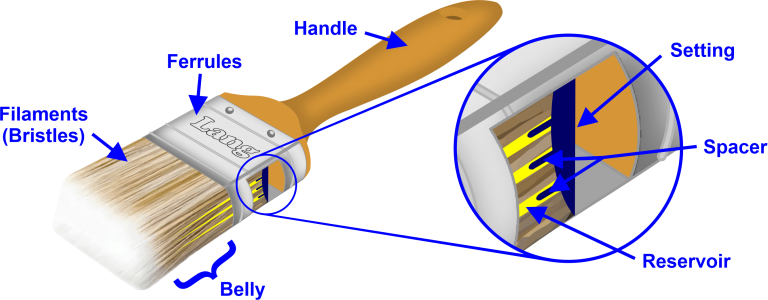
Components of a Paintbrush
The ferrule is the metal part between the handle and filaments this is to secure the filaments to the handle by riveting or by steam jointing to the handle which doesn’t need rivets.
common ferrules are made from nickel-plated metal which will rust when using water-based paints, alternatively, you can purchase copper ferrule which is more expensive.
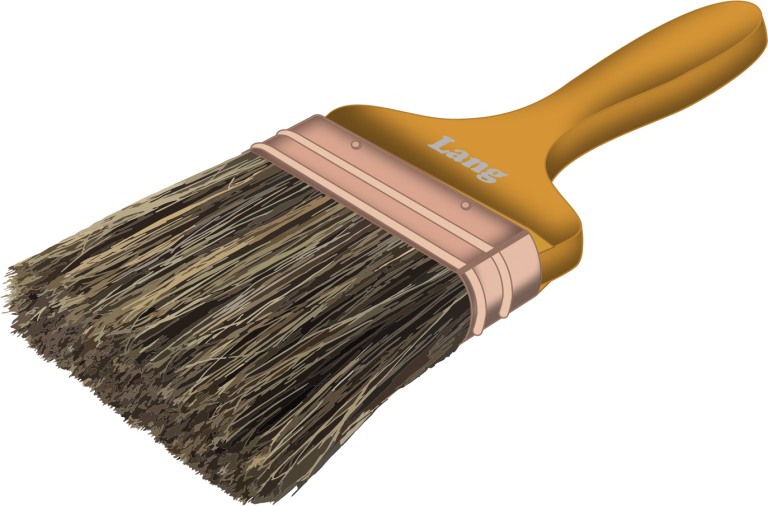
Copper Ferrule Paintbrush
Pure hair bristles come from wild pigs, boars or hogs, they have good strength and flexibility.
Pule bristles have four qualities, which are highlighted below in Bold Blue Text.
The Flag is split into several strands this provides a softer end, which helps the laying off process giving you a smoother finish plus minimising brush marks.
A good painter and decorator normally have two sets of pure bristle brushes, the newest set is used to apply base coats this helps to break in the brush, the older set is used for the final coat for a smoother finish.
Serrations or scales along the length of the bristle helps to hold more paint and prevents the bristles from lying too close to each other.
Pule bristles have a Natural Taper curving inwards from the root to tip which forms a belly, this is the fattest part of the brush which also acts as a reservoir just like the spaces in the setting.
Each paintbrush contains up to 5 different lengths this bristles structure makes the brush sufficiently stiff.
Dusting brushes have their bristles reverse when placing into the setting and form a natural curve outwards.
Do not use pure bristles when applying water-based paints, the bristles will absorb the water from the paint losing their Natural Springiness and splay.
On rough surfaces do not use pure bristles as they will be damaged by the surface, alternative used synthetic brushes they will last a lot longer.
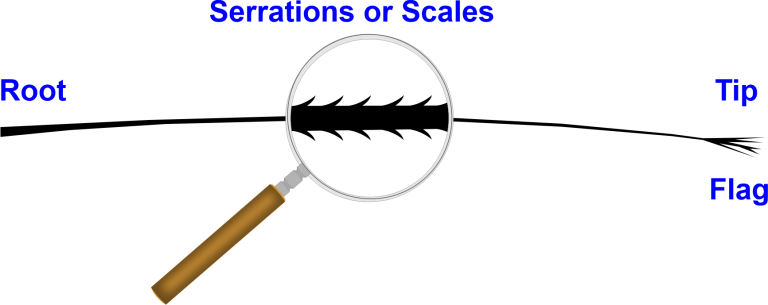
Pure Bristle
Horses hair is cut from the tail and the manes, the hair has a little spring and no taper needs to be mechanically split or flagged.
To produce a cheaper and softer brush it is sometimes mixed with bristles, the supplier should clearly state this on the packaging.
The filaments are made from polyester, nylon, or a mixture of both being the higher quality blend for paintbrushes.
During the manufacturing process, the manufacturers can flag the ends of the bristles which allows the bristles to absorb and hold more paint.
Advantage of synthetic bristle brushes they can apply a wide range of paint types, plus do not expand when using water-based paints and are easy to clean.
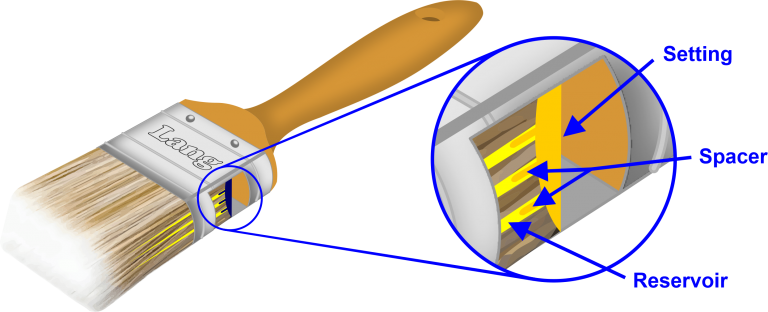
The setting is a Synthetic Resin glue all the bristle routes together,
manufacturers also use Vulcanized Rubber or Shellac.
Spaces in the setting create a void between the bristles enabling the brush to load more paint inside the reservoir.
NOTE:
Do not use brushes in paints that contain solvents that will dissolve the setting, thus creating bristle loss.
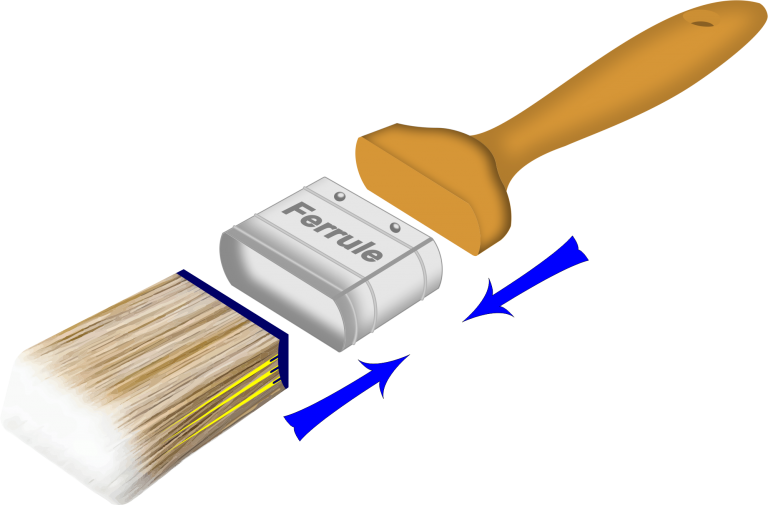
Components of a Paintbrush
The ferrule is the metal part between the handle and filaments
Filaments (Bristles) are dipped into the setting, this is heated at temperature to allow curing of the solution (Setting).
This is allowed to cool down and set before insertion into the ferrule at this stage the handle is inserted as well.
The whole ferrule is then pressed, seamed or riveted once this is completed the bristles are dipped into a moth-repellent solution.